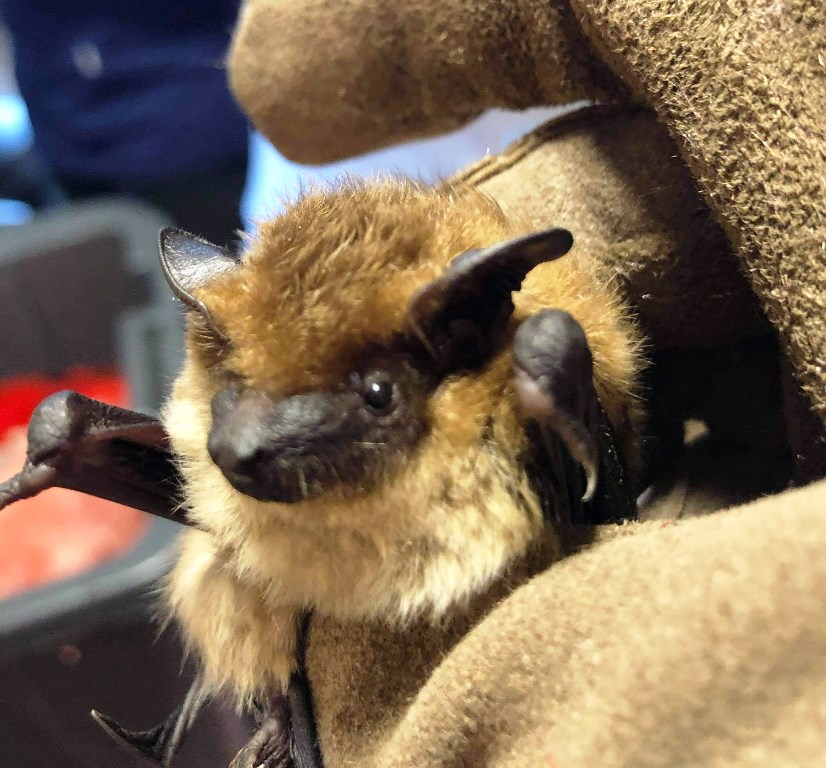Removing about 800 bats from the Unity curling rink attic has given Cut Knife’s DTS Roofing and Bat Services Ltd. almost as much notoriety as Batman himself.
The bat colony was discovered as work began on renovations to the facility in November.
The company’s owner, Dave Pentecost, estimates he has done more than a dozen interviews provincially and nationally since news of the infestation broke.
He said the response has been positive, but it definitely increased action on his phone line. For several weeks, he assigned his son to field media calls and respond to increased demand for the company’s services.
Pentecost, who has been in the roofing business for 20 years, was assigned the task of removing the bats based on his qualifications as a certified bat extractor. He travelled to the United States and took courses to earn that designation. Bat removal has been a significant component of the business operated by Pentecost and his son Seth for the past seven years.
Unity’s colony is the biggest he has encountered so far.
“We removed just under 800 bats, although some were dead. We found another 10 on the very last day of work.”
The work, conducted in February, took about three weeks with four people working on the project.
“The process included removal of insulation to ensure we could find all the places where the bats may be situated and ... we kept finding more and more, especially in the far east end of the building where it was warm.”
Pentecost says they found 383 bats in a couple hundred square feet of the building.
A bat colony of this size going largely undetected isn’t really a mystery, Pentecost says.
“They don’t leave the colony at the same time, even though people think they come out all at once in a flock.
“We have experienced this shocking and surprising reaction before in our work. People call us in thinking they have one or two bats and are hard to convince that there is more than that in their property until we show them photos.”
Bats are fascinating, the removal expert acknowledges.
“Reaction has been of curiosity, interest and positivity since this story broke. People are learning how useful these creatures are and they want to keep them, just not in their houses or public spaces,” he says.
Bats are opportunistic and intelligent, Pentecost observes.
“Bats typically would only need a hole the size of your pinkie finger to crawl in. They live up to 40 years and can reproduce every year. They tell their relatives about this great place and between that and producing offspring, well that is how their numbers increase.”
And bats know a good thing when they find it.
“Bat houses are usually a lot smaller, so why would they leave the Sheraton,” Pentecost quips regarding the colony found in Unity.
Pentecost says he never encountered a bat colony as large as Unity’s “bat cave.” However, he did do work on a 900 square foot residential property where 168 bats were removed.
And, when removal is required, timing is a factor.
“When a removal happens in the summer, bats can easily be released to the wild, however winter removal is a much different process.”
Through a previous connection involving bats, Pentecost contacted Melanie Elliott, a bat biologist, and she referred him to Living Sky Wildlife Rehabilitation group to assist with the careful removal and care of the bats taken out of the Unity arena.
“When we told LSWR we had a large amount of bats, they got prepared for us to bring them. After the first two batches were taken there, LSWR was able to round up more volunteers and they picked up the bats from that point.”
Unity Parks and Recreation Director Nicole Headrick reports the bats are being well cared for.
“Living Sky Wildlife Rehabilitation continues to care for and hand feed the bats that are not big enough yet to go back into hibernation. Jan at Living Sky was happy to report that the majority of the bats are now safely hibernating in bins in temperature controlled rooms.”
The next step will be release into the wild, and design and construction of bat houses is part of that process.
Anyone interested in helping is encouraged to email [email protected]. Once a design and plan has been confirmed, the organization will be reaching out to everyone who has offered to help.
Bat house design is complex with multiple chambers, instead of a basic one-level room. Bats, a protected species, eat approximately 1,000 mosquitoes per hour and usually feast for three to four hours each night. They also eat other bugs and insects, and their guano is said to be one of the most sought after fertilizers in the world.
“We should know more in the next couple weeks, but feel free to call the office or follow our Town of Unity Facebook page. Once we have the bat house drawings, they will be posted on our website and Facebook pages,” Headrick says.
She adds that Pentecost’s work included proper sanitization of the former colony area, and sealing it up to prevent reestablishment.




